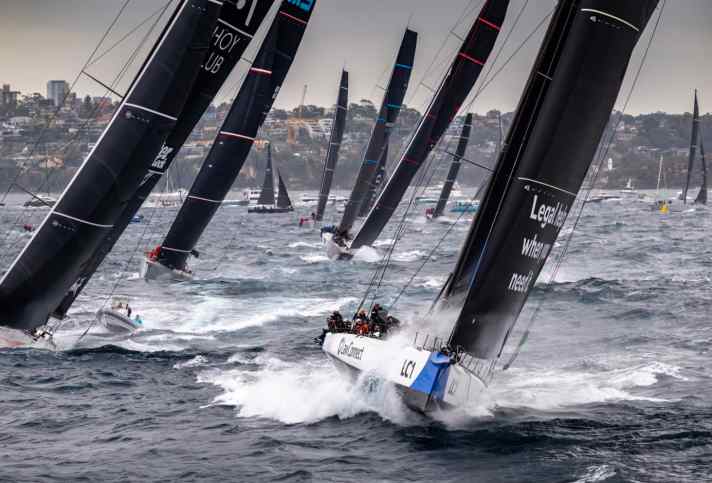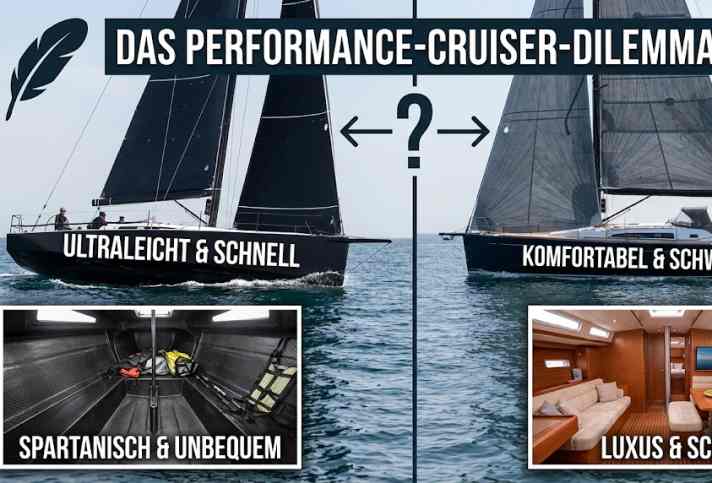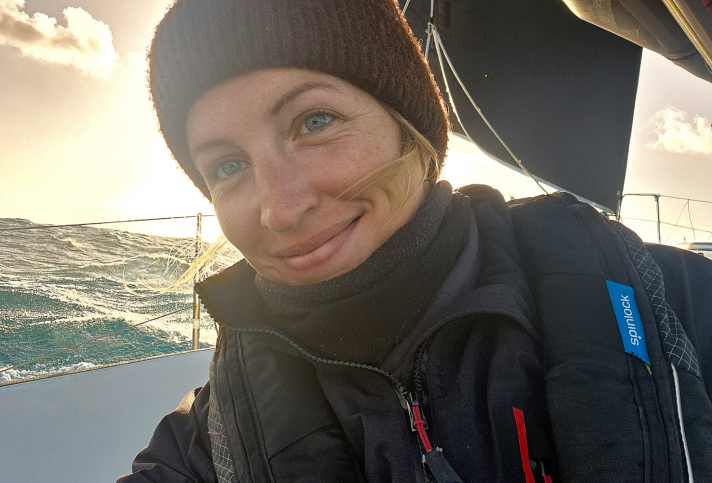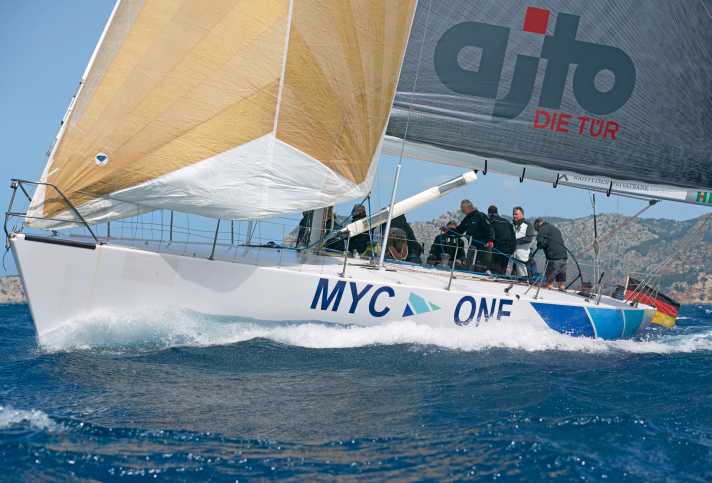
Dear readers,
There is a lot of talk these days about the extent to which terms are still up to date. With some delay, the storm has also reached words or phrases from the sailing cosmos. Some are considered irrefutable in the "Lingua Nautica". As if they had been cast in lead and sunk into the long keel of a cruiser yacht that is stubbornly fighting its way against the tide of change. Unwavering, not unpleasant, always preserving their dignity; spray rolls off the glossy lacquered wooden surface. Tradition always has to do with care.
This is not the place to shed light on the "man overboard" case; a TV documentary about Daniel Küblböck (ARD-Mediathek) has brought the topic and, in my opinion, rightly new spelling into the public eye. No, let's stick to the material. It's about the core, the boat that carries us and moves us along. We say yacht, THE yacht. A word that evokes associations. Of elegance and beauty. There is a reason why the spelling "Jacht" has not found its way into the sailing world - even though it is prescribed by the Duden dictionary and the round initial letter is more suited to the original soft lines of sails. On the one hand, we as a magazine stick to the original; as early as 1904, the title of the first issue was adorned with the logo lettering "Die Yacht" (at that time still with an article).
On the other hand, we stick to the original, borrowed from English, out of habit. Or do we not? On the contrary, the question arises as to whether the feminine article still fits the contemporary cracks at all. The masculine design language has not only found its way into performance and cruiser formats, it has become predominant. Edges, dead-straight deck jumps, perpendicular sterns and outlines so expansive that they are dimensionally stable but look bulky - in the eyes of some onlookers. Perhaps equality should be cited as a reason, as the model names of catamarans are already preceded by the masculine article.
Or you leave Otto Protzenonce the emperor's favourite sportsman at the helm and sheet, provided a reason for the femininity of sailing vessels: "It's easy to remember that boats are female. Because they have to be cleaned forever, because they cost a lot of money, always want to be treated well, often have their moods and are very difficult to get rid of once you have them."
At the beginning of the 20th century, the Berliner dominated the scene for special class yachts, flat-bottomed keelboats for three gentleman sailors on both sides of the Atlantic. He was also a landscape painter, creator of beautiful cracks and author. Protzen's prose reveals him to be a great friend of maritime terminology, which is worth digging up again. His maritime memoirs "40 Years on the Water" are well worth reading, and there is also an exhibition about Prussia's exceptional sailor in his association Seglerhaus am Wannsee (VSaW).
Sören Gehlhaus
YACHT editor
You have voted - the result of last week:
Recommended reading from the editorial team

European Yacht Of The Year 2026
The nominees for European Yacht of the Year

After a tough slump, the boating industry is taking off again. This can be seen in the election for European Yacht of the Year, in which 23 candidates are competing.
Rolex Sydney Hobart Race
250,000 dollar starter bet? Just a rumour...

The 80th Rolex Sydney Hobart Race is underway! 128 boats started the Christmas classic on Boxing Day. A betting rumour was the talk of the town.
Feliz navidad
Wilts' Christmas in Tierra del Fuego

35 years ago, the Wilts spent Christmas Eve on the Freydis in Tierra del Fuego. Heide recorded what they experienced in the on-board blog.
Performance Cruiser 2025
How much racing can the cruising tour take?

Modern performance cruisers should be able to keep up on regatta courses and at the same time enable challenging cruising. The current boats solve this conflict of objectives in very different ways - from foil-supported racing platforms to touring-capable speed sailors with a fully-fledged interior. The decisive factor is less the maximum speed than the question of whether the concept, sail plan and interior fit the planned use and the typical crew. Those who consciously select their boat according to these parameters will get the greatest practical benefit from the new performance generation.
Llangollen Canal in Great Britain
Narrowboats go aground after dam bursts

Dam bursts on the Llangollen Canal: Canal wall collapses, water flows out, several narrowboats run aground. Two boats slide into a four metre deep depression.
Saffier SE28 Leopard
Baptism of fire for the big cat from Holland

GRRR! The predator shows its teeth. Before the world première at the trade fair in Düsseldorf, the new Saffier SE28 Leopard has to pass the shipyard tests. The Dutch have sent the first photos.
Hanseyachts
Managing Director Runde leaves Germany's largest yacht shipyard

Hanseyachts has parted company with managing director Hanjo Runde and is now relying on a new dual leadership.
Navigation
Sweden relies on old technology to combat GPS interference

In response to increasing GPS interference, Sweden is equipping ten lighthouses along the south coast with Racon technology. The systems respond to radar signals and enable navigation without satellites.
Globe40
"Suddenly on the other side of the world"

If you can dream it, you can do it: Austrian Lisa Berger and her co-skipper Jade Edwards-Leaney show how it's done at Globe40.
"Container" from 1991
The second life of a legendary German winning yacht

Sailed by professionals, she was one of the most successful German yachts. Today, anyone can turn the wheel or winch on the former "Container"
Newsletter: YACHT-Woche
Der Yacht Newsletter fasst die wichtigsten Themen der Woche zusammen, alle Top-Themen kompakt und direkt in deiner Mail-Box. Einfach anmelden:
